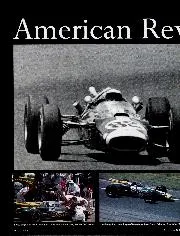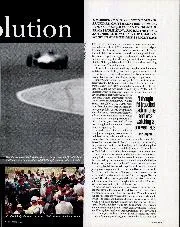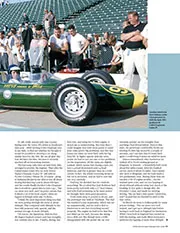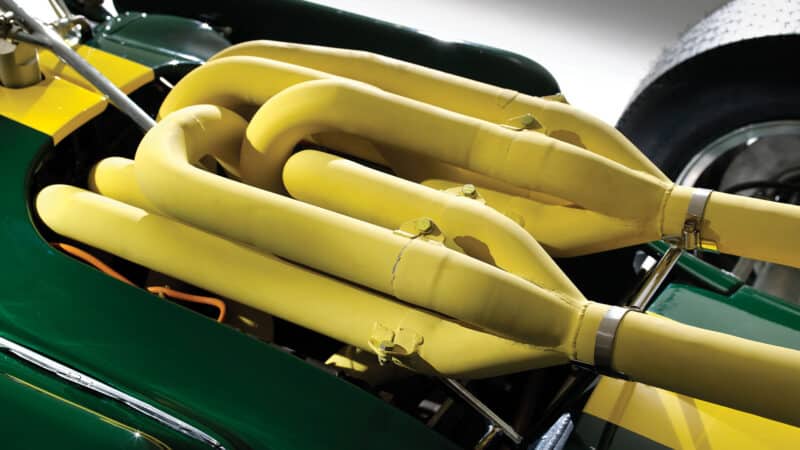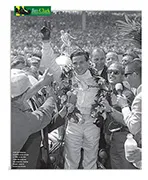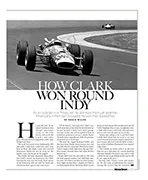Laz leans in – “I remember making those pedals!”. Suddenly there are pointing fingers and a jumble of talk about breathers and fuel valves. Fuel flow was crucial to the 38: new USAC rules for ’65 meant only gravity fuelling, so to fill the tanks – two side, one behind the seat – Terry fitted a fast-flow funnel inside the rig tank and turned the one fill, one vent system into two fill pipes, increasing fuel flow by a third.
“Remember [legendary team boss] Andy Granatelli staring at the extra weld on the rig? laughs Lazenby.
“He knew we’d done something, but he couldn’t figure it.”
“Fifty gallons in 19 seconds,” says Len with restrained satisfaction. “They all thought we’d have to stop again.” In his eighties now, Len still has a schoolboy twinkle as he recalls the tricks that went along with the science, like his self-feeding ‘bird bath’ oil tank that baffled Indy denizens by looking too small to last. They couldn’t see the back-up on the bulkhead.
The other ace in their hand was the Woods brothers (and two cousins) – drawling Southern stock car boys who manned the pumps. Famed for their pitwork, they were flown in by Ford. Helped by Len’s device, the brothers took slices out of pitlane downtime, keeping Jimmy in front for most of the race. Laz: “They spoke so slow you thought they’d never do a quick stop – but in action they were amazing!”
“We could hardly understand each other, though. They kept asking ‘you really English?’” says Bob Dance, in his rich Norfolk burr.
With these ‘unfair advantages’ lined up, Colin could safely afford to choose slower but hardier Firestones over faster, fragile Goodyears.
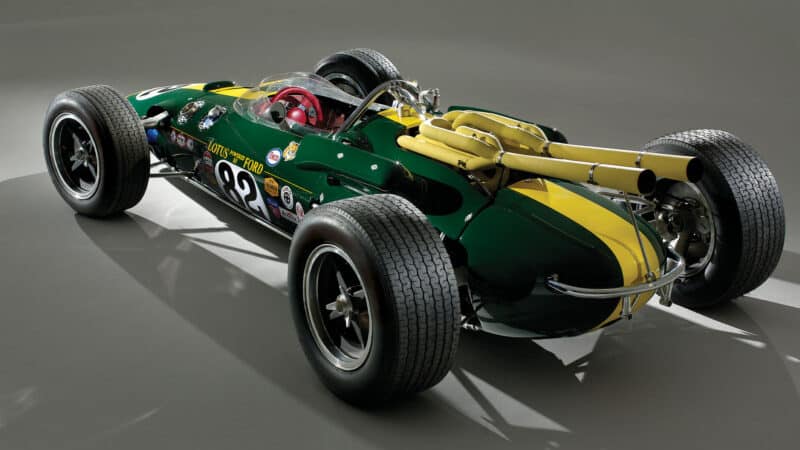
38 was the culmination of a British racing revolution in the American Midwest
Greg Pajo
As more panels come off the grey heads crowd in, excited as small boys. Determined on accuracy, the museum has collated a huge amount of research material. Armed with photos, drawings and laptop video, Clive quizzes them on metal finishes, switches, instruments. He not only wants to get it right, he needs to show it’s right. CTL has drawers of drawings, but this was a race team – you modded on the hoof, and you didn’t bother drawing what you knocked up. And because you were there doesn’t mean you remember…
“Who made these?”
“You did!”
There are oddities that puzzle everyone – welding stumps where something’s been moved. And “What are these four pull knobs for?” They work back into the car and into memory: “Indy made you have a fuel shut-off, that’s this one… This one’s for mixture…” Torches come out – they’re the sort of men who carry torches; Laz’s head gets further inside. It’s archaeology crossed with a logic puzzle. The collective ‘ahhhh’ when they figure out the final one – a two-gallon get-you-home tank fitted in practice – is like finishing The Times crossword.
Now they debate a patch of glue in the cockpit. Period or a museum fix?
“Could be for padding for Jimmy,” Len suggests. “Remember I designed the car for Dan, who was much bigger.”
“One reason why Bobby Johns was a good second driver – he was the same size as Jim,” says Graham Clode.
They’d been due to run first at Trenton, NJ, but after an accident to the second car (which meant building up a fresh one under the same chassis plate) they went straight to Indiana, where stock car veteran Johns stepped up alongside Clark. The other candidate, Parnelli Jones, ended up in his Agajanian-modified Lotus 34, while A?J?Foyt in another 34 and Gurney in his go-it-alone All-American Racers 38 meant that as the crowd baked and the majorettes glittered and strutted, four of the high five were Chapman cars, split by Mario Andretti’s Hawk Brabham copy. Nine of the top 10 bore Ford blue ovals, two-thirds of the grid sat ahead of their power plants. No matter who won, after this the old order of tube frames and up-front Offenhausers was a sideshow.
Clark’s 160mph qualifier was a record-smasher, but Foyt topped it to grab pole in the older car. No matter; Clark led into Turn 1 and that wrote the script for 190 of the 200 laps.
The boys crowd round Clive’s laptop to watch the period video. Andrew Ferguson, then Competitions Manager, says in his book that Jimmy meant to trail Foyt into Turn 1, passing him inadvertently. It fits with Dave Lazenby’s comments now, eyes fixed on the fuzzy grey image. “Jimmy took two laps to settle, then he was gone.” Lap 3 arrives. “There, see? He’s off!” They’re all round-eyed and quiet. They were in the middle of it; they know what happened; they’re still riveted.
“I was standing biting my nails, thinking is he going to get there?”
AJ heads Jim briefly, but those fuel stops, and the overwhelming pace of car and driver, tell. The commentator goes all Murray over the quick pitstop – surely he’ll have to stop again. “Everyone else was shell-shocked by it,” smiles Graham. The leaders trade race records, but Foyt’s stops take two, almost three times as long. Dan’s Yamaha 38 drops back – a cam gear is breaking up – leaving Parnelli Jones to hassle Foyt for second. It’s all there is to fight for. AJ is great in traffic but it doesn’t help. Jimmy has lapped everyone bar Foyt when, just after halfway, the Texan’s transmission breaks.
“You were slow with that pitboard saying FOYT OUT!”
“Yeah, I still remember the sign language coming from Laz…”
Now rookie Mario Andretti is after Parnelli, and Jones is staring at Clark’s gearbox, but dangerously low on fuel and on the wrong lap. Clark’s two-minute lead is practically the other side of the International Date Line.
“I was standing biting my nails, thinking is he going to get there?” says Lazenby. “When he made it I just felt huge relief.”
Sparshott shakes his head. “I can’t remember any of this. I was too scared!”
Tinny cheering from laptop. Crowd on feet. Chequer waves. Jim makes history, in this car right here. What was it like in the pitlane?
“Euphoric,” says Graham.


